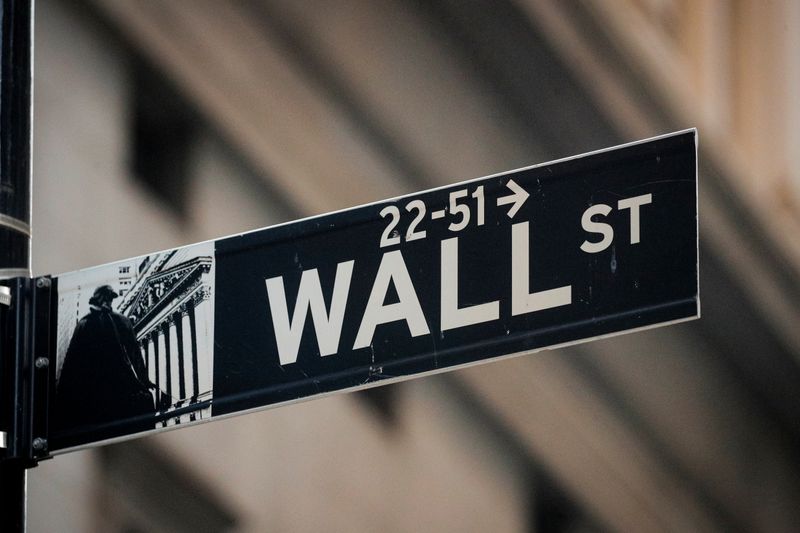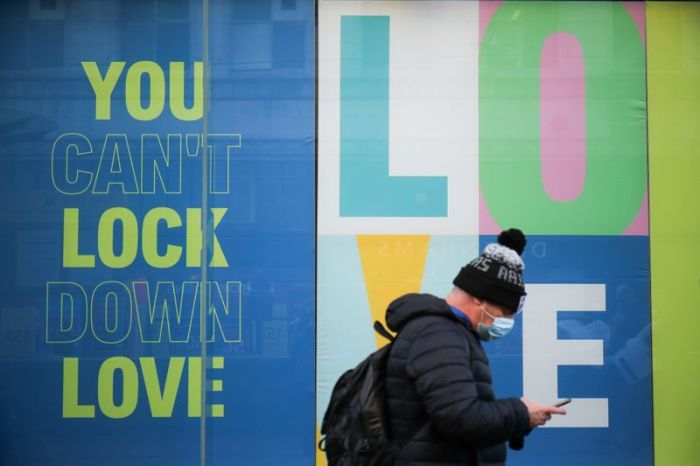NEW YORK (Reuters) -Shares on Wall Street ended higher on Tuesday in choppy trading, as investors took advantage of the previous session’s slump to buy them back, ahead of the outcome of the Senate runoff elections in the battleground state of Georgia, which will determine the balance of power in Washington.
Overall, analysts expect the stock market to consolidate December’s gains in January, as asset managers looked to rebalance their portfolios that had been heavily tilted toward equities.
The latest polls from data website 538 https://projects.fivethirtyeight.com/georgia-senate-polls gave a slight edge to the two Democratic challengers who need to win both races for Democrats to gain U.S. Senate control from Republicans.
Along with their narrow majority in the House of Representatives, a “blue sweep” of Congress could usher in larger fiscal stimulus. It could also pave the way for President-elect Joe Biden to push through greater corporate regulation and higher taxes.
“Having a divided government is what generally investors want, whether you’re a Democrat or Republican. Investors prefer checks and balances,” said Jack Ablin, chief investment officer at Cresset Capital Management in Chicago.
“My sense is: we may get some clarity around the runoff by tomorrow, so why invest today?,” he added.
The Cboe Volatility Index flip-flopped after closing at its highest level in two months on Monday, which saw Wall Street’s main indexes drop to two-week lows as investors booked profits at the start of the year. It ended down 6% at 25.34.
The Dow Jones Industrial Average closed up 167.71 points, or 0.55%, to 30,391.6, the S&P 500 gained 26.21 points, or 0.71%, to 3,726.86 and the Nasdaq Composite added 120.51 points, or 0.95%, to 12,818.96.
Energy stocks jumped 4.5% on the back of higher oil prices, while healthcare and materials hit fresh record highs.
Consumer staples and utilities, however, were the laggards.
“We’re somewhat worried about the high expectations (on stocks) among investors,” Cresset’s Ablin said. “We looked at things like bullish sentiment, which is not at an extreme, but it’s certainly higher than normal. Margin balances are also pretty high, also suggesting a fair amount of complacency.”
Although the start of vaccine rollouts and massive monetary support powered the major U.S. stock indexes to record levels recently, the discovery of a more contagious variant of the coronavirus and the latest virus-related curbs have muddied the economic outlook.
Britain, where the new variant first emerged, began its third national lockdown, while New York on Monday found its first case of the highly contagious mutation of the coronavirus.
In terms of economic data, U.S. stocks got a boost from a survey by the Institute of Supply Management, which showed that U.S. manufacturing activity rose to its highest level in nearly 2-1/2 years in December, likely as spiraling new COVID-19 infections pulled demand away from services towards goods.
Chipmaker Micron Technology Inc rose 4.3% after Citigroup raised its rating on the stock to “buy” on expectations of a recovery in demand and pricing for DRAM chips.
U.S.-listed shares of China Telecom Corp Ltd and China Mobile Ltd gained 8.8% and 9.3%, respectively, while those of China Unicom Hong Kong Ltd advanced 11.8%after the NYSE reversed its decision to delist the stocks.
Advancing issues outnumbered declining ones on the NYSE by a 2.86-to-1 ratio; on Nasdaq, a 2.49-to-1 ratio favored advancers.
The S&P 500 posted 19 new 52-week highs and no new lows; the Nasdaq Composite recorded 117 new highs and four new lows.
Volume on U.S. exchanges hit 14.37 billion shares, compared with the 11.09 billion average for the full session over the last 20 trading days.
(Reporting by Gertrude Chavez-Dreyfuss; Editing by Marguerita Choy)
























